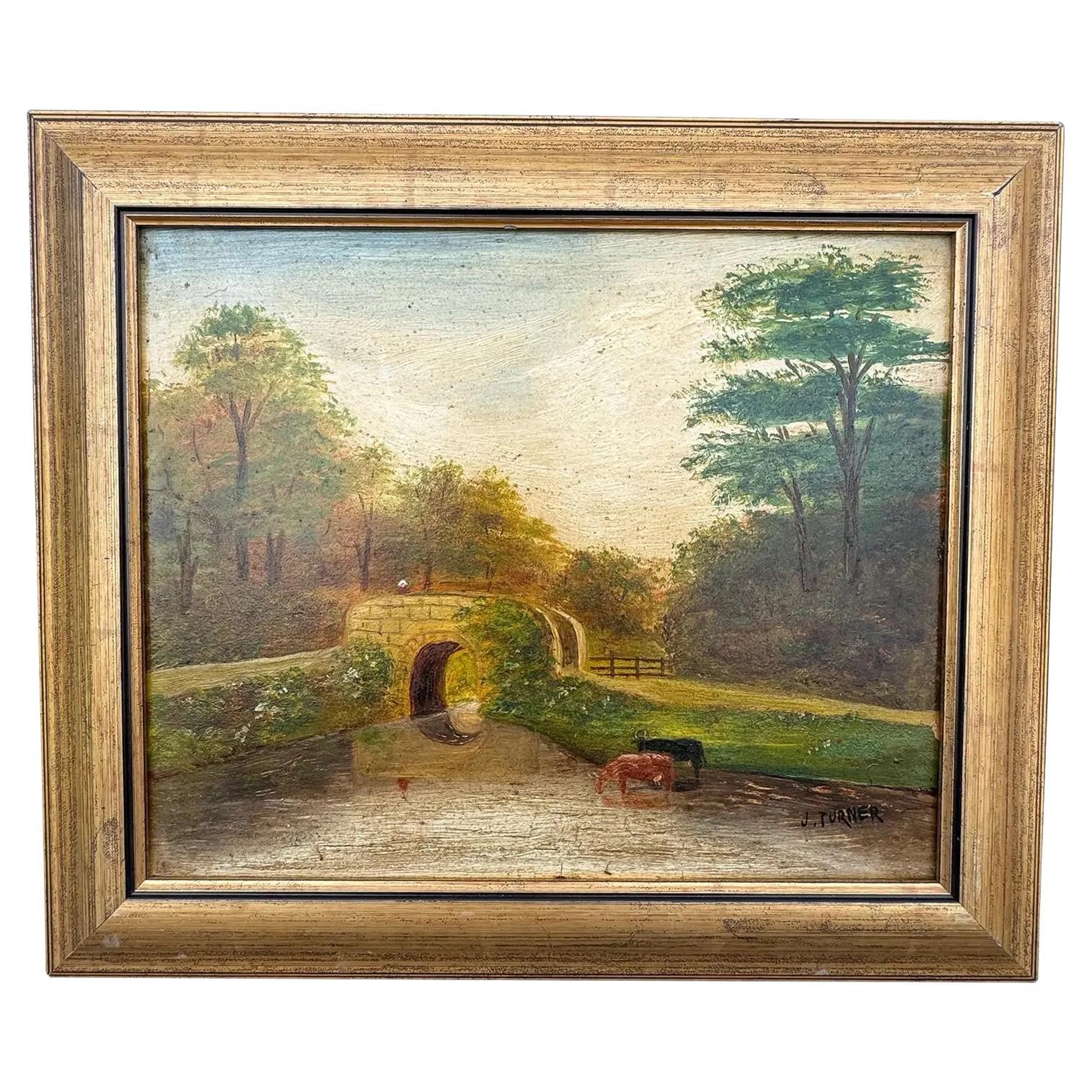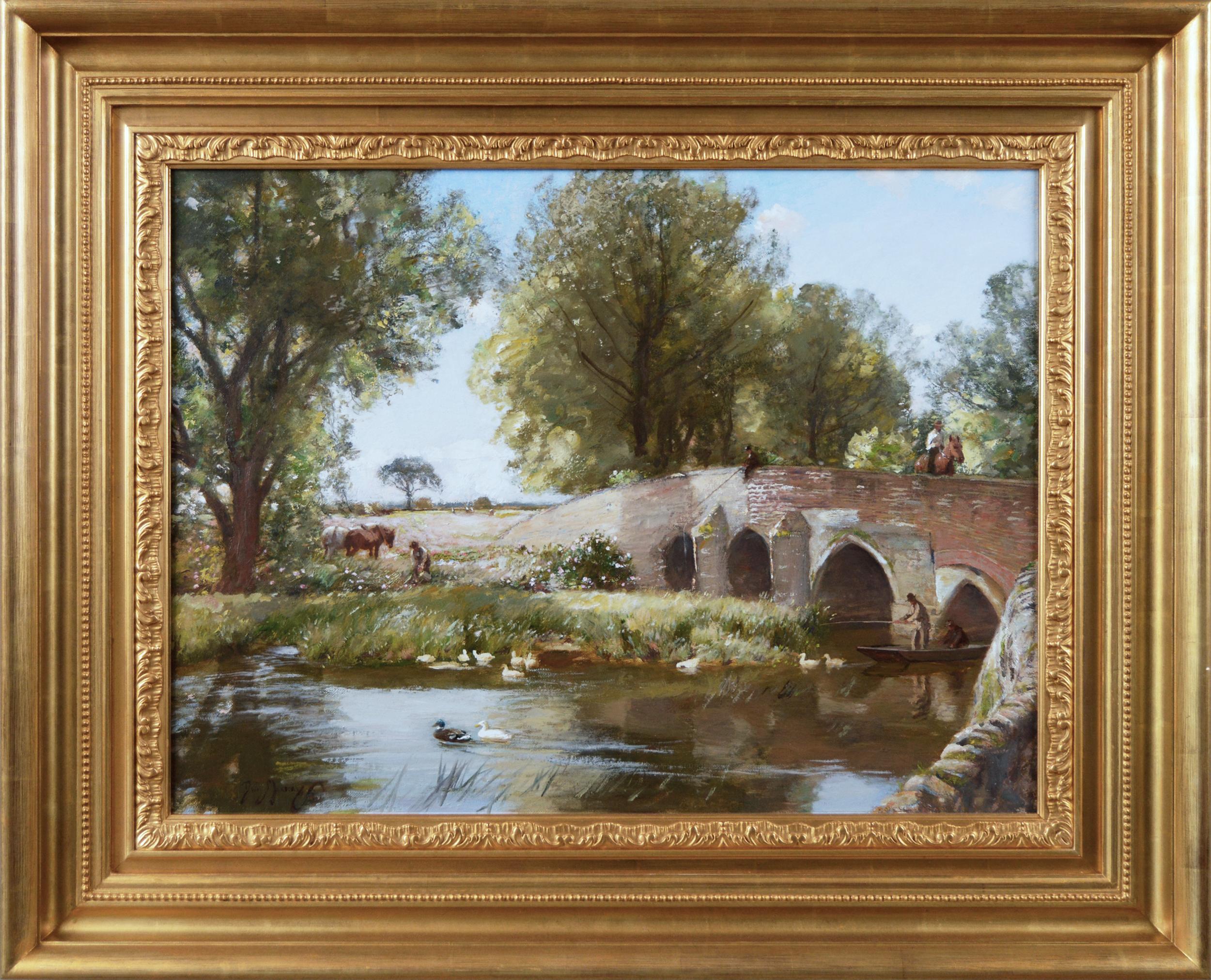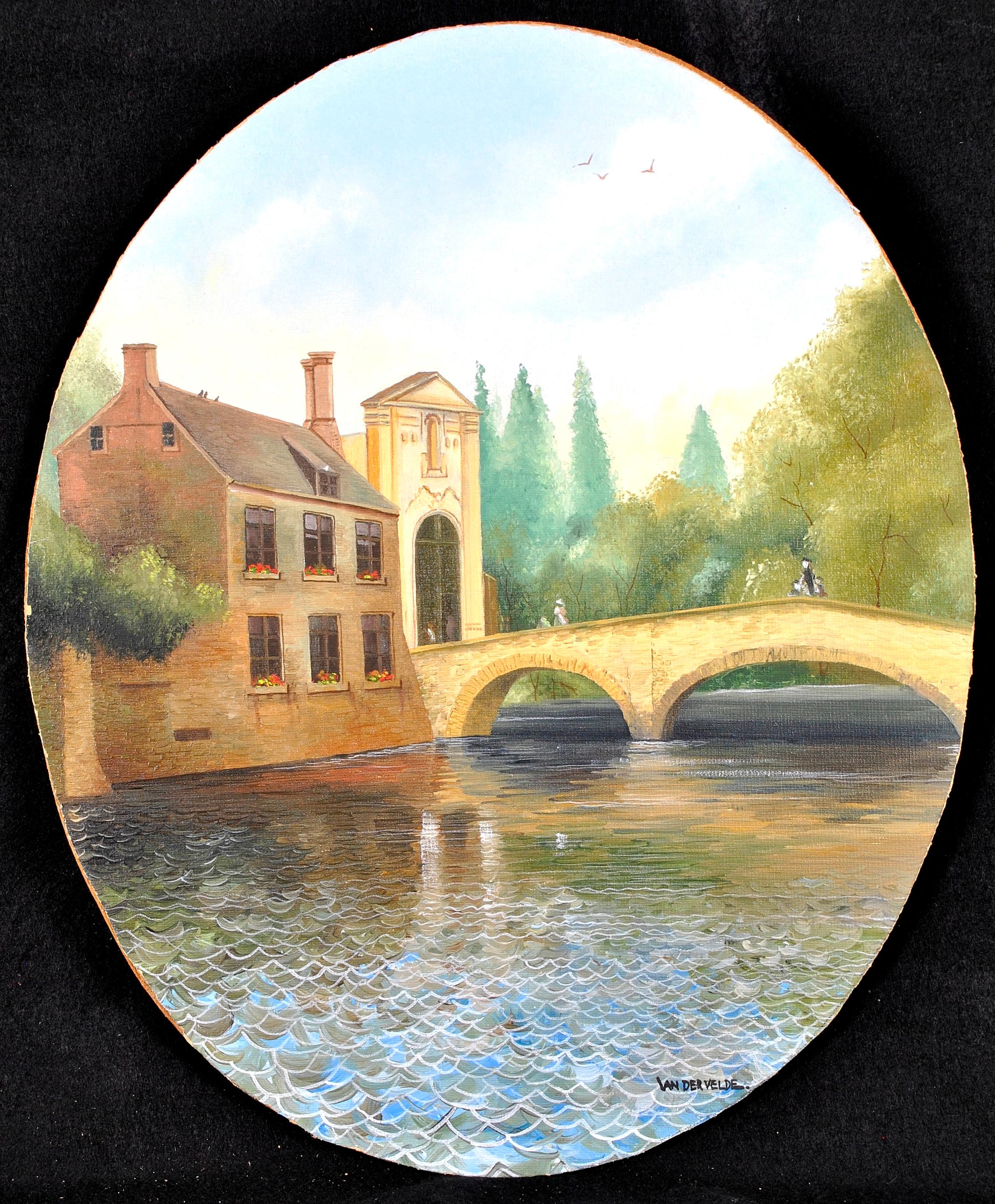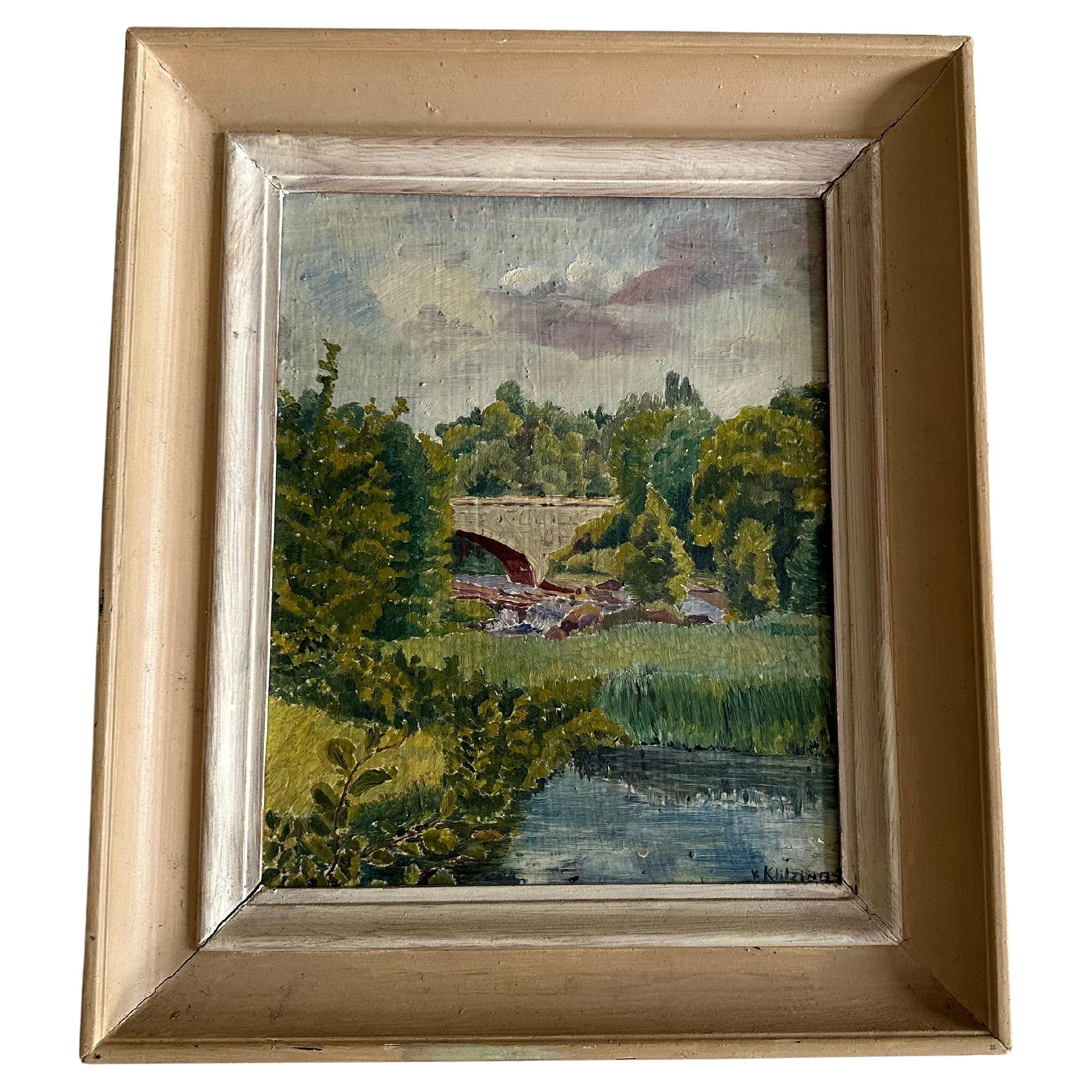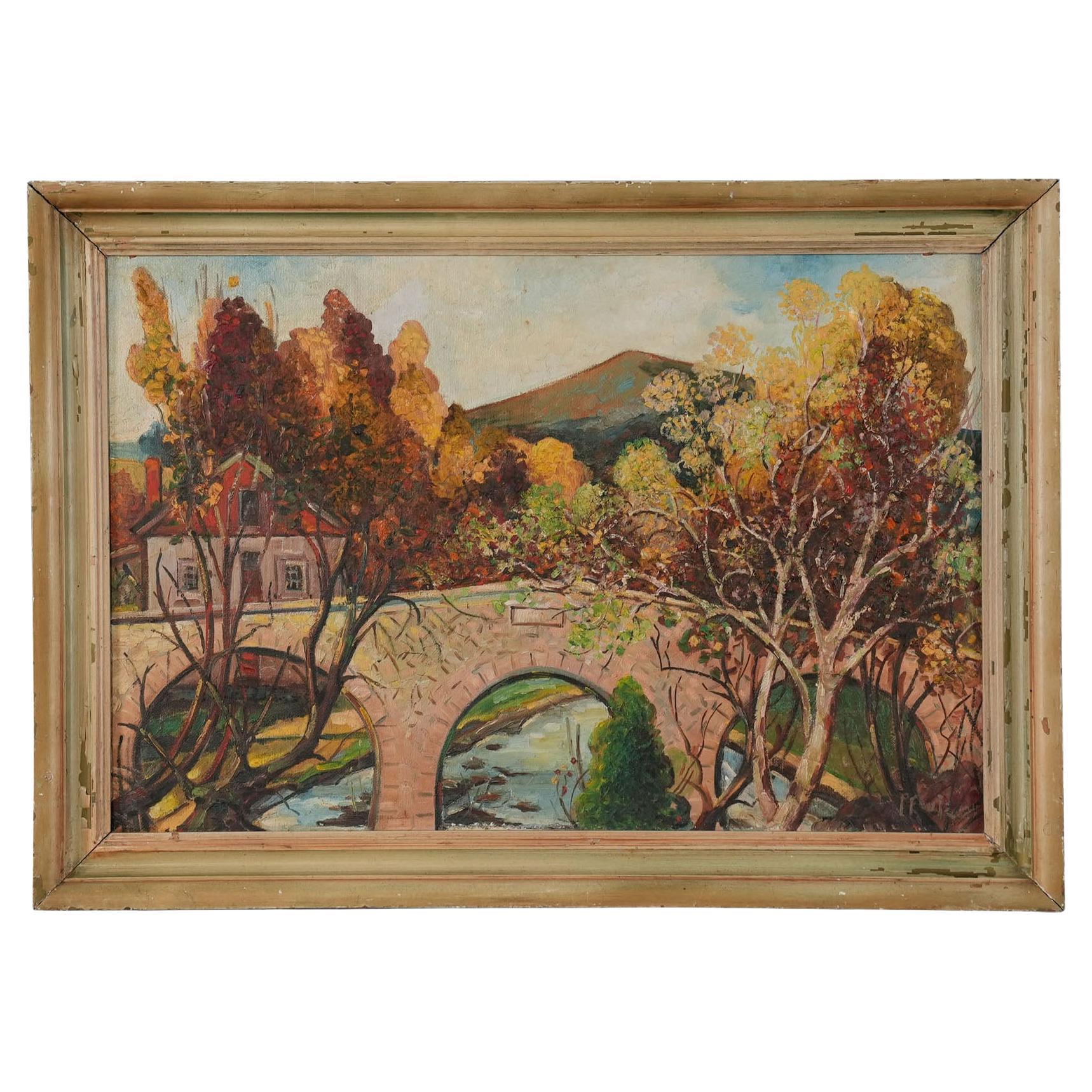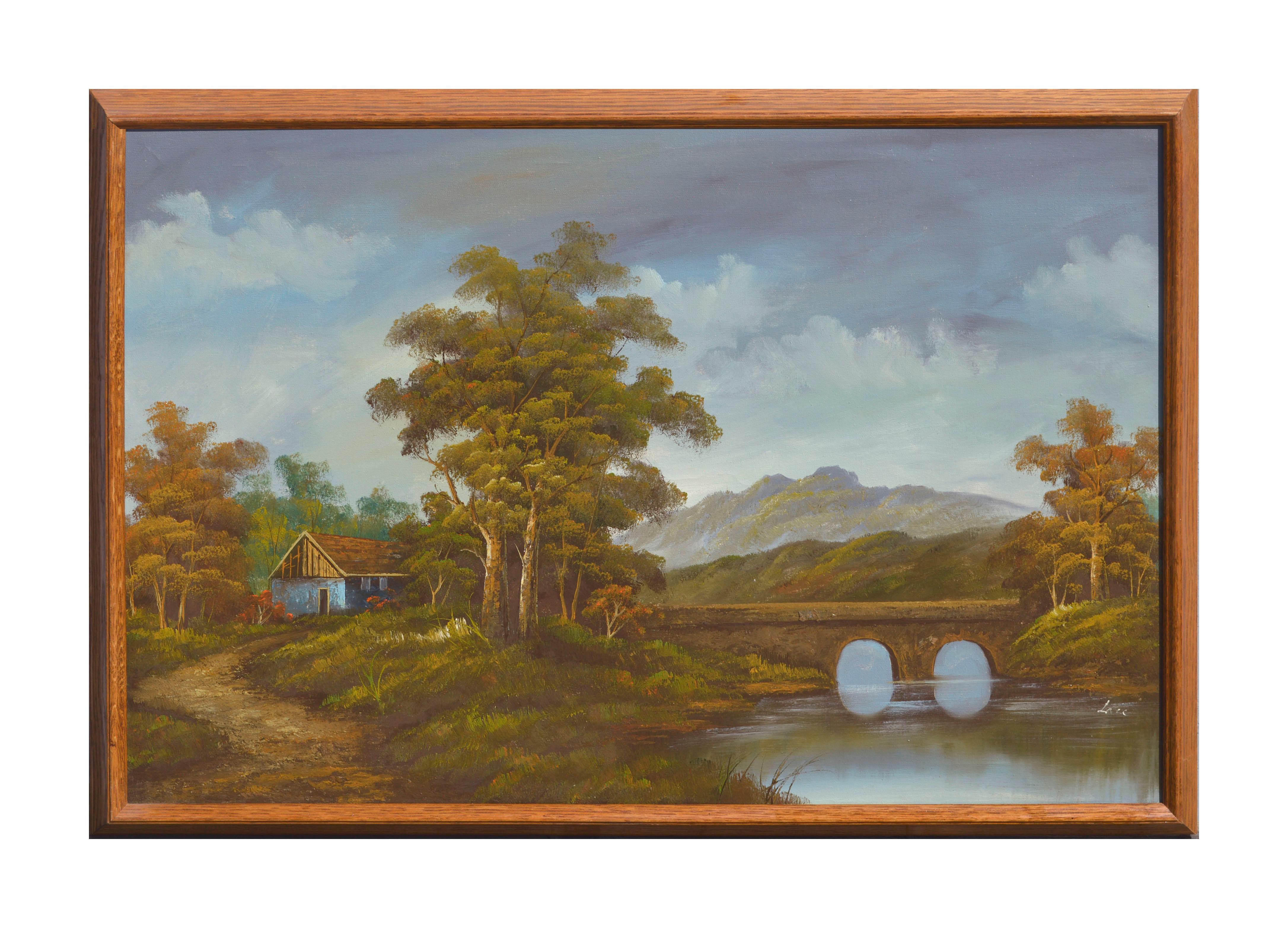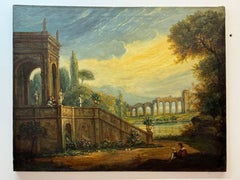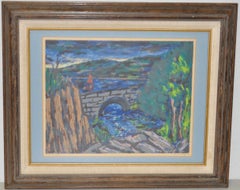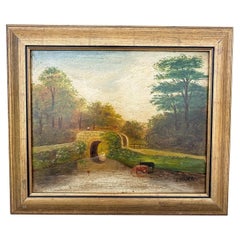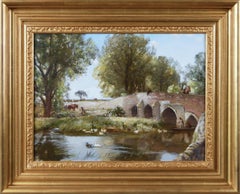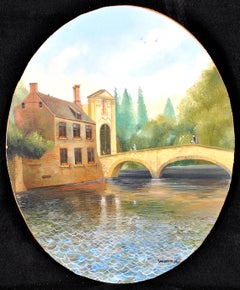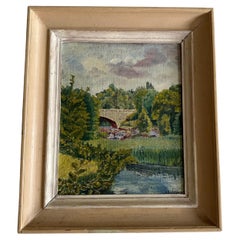Items Similar to "The Bridge, Shanklin China" on Porcelain Plaque
Want more images or videos?
Request additional images or videos from the seller
1 of 14
Unknown"The Bridge, Shanklin China" on Porcelain Plaque20th Century
20th Century
$475
£361.16
€416.06
CA$675.33
A$733.96
CHF 387.87
MX$8,879.36
NOK 4,830.65
SEK 4,562.85
DKK 3,106.38
About the Item
C. 20th Century - Beautiful Painting " The Bridge, Shanklin China " on Porcelain Plaque in a Victorian Frame ( Signed lower right side )
- Creation Year:20th Century
- Dimensions:Height: 16.5 in (41.91 cm)Width: 12.5 in (31.75 cm)Depth: 1.5 in (3.81 cm)
- Medium:
- Period:
- Condition:
- Gallery Location:San Francisco, CA
- Reference Number:1stDibs: LU137829143032
About the Seller
4.9
Gold Seller
Premium sellers maintaining a 4.3+ rating and 24-hour response times
1stDibs seller since 2020
556 sales on 1stDibs
Typical response time: 5 hours
- ShippingRetrieving quote...Shipping from: San Francisco, CA
- Return Policy
Authenticity Guarantee
In the unlikely event there’s an issue with an item’s authenticity, contact us within 1 year for a full refund. DetailsMoney-Back Guarantee
If your item is not as described, is damaged in transit, or does not arrive, contact us within 7 days for a full refund. Details24-Hour Cancellation
You have a 24-hour grace period in which to reconsider your purchase, with no questions asked.Vetted Professional Sellers
Our world-class sellers must adhere to strict standards for service and quality, maintaining the integrity of our listings.Price-Match Guarantee
If you find that a seller listed the same item for a lower price elsewhere, we’ll match it.Trusted Global Delivery
Our best-in-class carrier network provides specialized shipping options worldwide, including custom delivery.More From This Seller
View AllLandscape with Temple ruins and figures
Located in San Francisco, CA
Landscape with Temple ruins and figures
19th century
Possibly signed lower right
Oil on canvas
31 x 40
Category
19th Century Landscape Paintings
Materials
Canvas, Oil
Harry Shoulberg "The Bridge" Serigraph c.1944
By Harry Shoulberg
Located in San Francisco, CA
Harry Shoulberg (1903-1995)
Expressionist mid modern serigraph "The Bridge" c.1944
Pencil signed and titled by the artist.
This fine serigraph retains all of it's vibrant color after 76 years!
Dimensions 12" x 15". Frame dimensions 23" x 19". Very good condition.
Please note: The linen rabbet lining of the frame does show some discoloration.
This is a rare and exceptional work by Shoulberg. His serigraphs can be found in the permanent collections of some of the finest museums, and institutions in the country.
Harry Shoulberg was born in Philadelphia, 25 October 1903 of Russian/Jewish heritage. His father, Max Shoulberg, was the fourth of twenty children and the first to be born in America. His mother was Tessie Derfler, a New Yorker of German descent. Harry grew-up in New York, married Sylvia Hendler in 1931, and had one child, Ted.
Shoulberg attended City College of New York where he studied biochemical engineering for three years before switching to fine arts in his last year. He continued his art education at the John Reed School, 1934-1935, the American Artist School, 1935-1937, and then privately at the studios of artists Sol Wilson (1894-1974) and Carl Holty (1900-1973). In 1938, he worked for the WPA and produced two oil paintings for the organization.
He maintained studios in New York City and Bridgehampton on Long Island until 1983. He was a late bloomer...
Category
Early 20th Century Impressionist Landscape Prints
Materials
Screen
European Countryside Scene
Located in San Francisco, CA
C. 20th Century
European Countryside Scene / Oil on Canvas Board ( NO visible Signature )
Category
20th Century Landscape Paintings
Materials
Oil, Board
Country House and Garden with Trellis
Located in San Francisco, CA
Country house and garden with trellis. From Milt D. Young Memorial Museum, circa 1940s-50s
Category
Mid-20th Century Landscape Paintings
Materials
Oil, Panel
F. Stoltenberg what is landscape with trail to a cottage
Located in San Francisco, CA
F. Stoltenberg wooded landscape with trail to a cottage
19 century
Oil on canvas
16 x 20 unframed, 23 x 27 framed
Category
19th Century Landscape Paintings
Materials
Canvas, Oil
A Peaceful Country Lane
Located in San Francisco, CA
There’s a gentle hand in Emanuel Matthews’ landscapes, exhibiting here and in other pieces a fondness for a more bucolic, genteel and barely industrialized America. Although painted ...
Category
20th Century American Impressionist Landscape Paintings
Materials
Canvas, Oil
$1,650
You May Also Like
19th Century English Village Bridge Oil on Canvas
Located in Nashville, TN
Coming to your home from 19th-century England, this original oil on canvas brings a calming image to any room. An old stone bridge spans a tranquil river on a sunny day. Two cows vis...
Category
Antique 19th Century English Paintings
Materials
Canvas
19th Century landscape oil painting of a bridge over a river
By Sir David Murray
Located in Nr Broadway, Worcestershire
Sir David Murray
Scottish, (1849-1933)
The Bridge
Oil on canvas, signed & further inscribed verso
Image size: 17.75 inches x 23.75 inches
Size including frame: 26.25 inches x 32.25 ...
Category
19th Century Victorian Landscape Paintings
Materials
Canvas, Oil
Bridge in Bruges - Mid 20th Century Belgian Naif Naive Landscape Oil Painting
Located in Sevenoaks, GB
A beautiful 1960's Belgian naif oil on canvas board depicting a bridge, probably in Bruges, with figures and buildings.
The work is very pleasingly painted in the naif style and in...
Category
1960s Landscape Paintings
Materials
Oil
Signed German Impressionist Oil Painting, ca. 1934 – Bridge in a Lush Landscape
Located in Hamburg, DE
This original German oil painting, signed and dated circa 1934, is a vivid example of early 20th-century impressionist landscape art. The composition features an antique stone bridge...
Category
Vintage 1930s German Modern Paintings
Materials
Canvas, Wood
Lancaster Bridge Original Oil Painting
Located in Annville, PA
A very interesting and unusual Lancaster Bridge Original Oil Painting by artist J. Earle Pfoutz. The painting is produced on artist board and comes complete with what appears to be an original artist decorated/painted frame. The painting is signed on the front by the artist.
Overall frame Size approximately 42″ wide x 2″ deep x 30″ high
J. Earle Pfoutz had a long and distinguished career as a self trained artist. More can be learned about him from reading this article produced by Gary Hawbaker at askART
Earle Pfoutz Born: 1891 – Lancaster, Pennsylvania
Died: 1957
Known for: Landscape, figure, still life painting
An image of J Earle Pfoutz
Biography from the Archives of askART
J. Earle Pfoutz (John Earle Pfoutz) – (Oct 23, 1891-Nov 9, 1957)
“A seventh generation descendant of a Swiss family which arrived in America early in the 17th Century, J. Earle Pfoutz was born in Lancaster, PA, son of John Bachman and Susan Allison Pfoutz. He painted houses for a living and pictures for a life.
A self-taught artist, described as a primitive, he was distinctive for his vivid imagination and bold color application. He painted hundreds of Lancaster County scenes. Pfoutz traveled through the hills near his home and along the Susquehanna River in search of scenes. He began painting with a brush when he was fourteen, but added a palette knife after suffering an eye injury. He completed eighth grade in the Lancaster Public Schools and there his formal education ended. However, the Department of Public Instruction of the State of Pennsylvania thought so highly of his work as an artist that officials certified him as an art instructor and he taught for a year in the York (PA) public schools. He also was an art instructor under the program for disabled veterans, sponsored by the Veterans Administration, when he gave private instruction to veterans in their homes.
In 1947, J. Earle Pfoutz finally earned national recognition as an artist. His painting, Opalescent October, was chosen by the Museum of Art of Dayton Ohio, to travel all over the country for a year with its Group Exhibition. Described as a “very colorful, calm scene, iridescent in color, sweeping in design,” the painting started on its journey around the country early in 1948. In an interview with the Sunday News (Lancaster, PA – Nov 2, 1947), Pfoutz stated that he didn’t know whether he was a “primitive” or an “impressionist.” No master taught him, no school channeled his style. “Sometimes I didn’t eat, but I always managed to paint,” he recalled. Many of his hundreds of canvases -most of them not sold, but given away to friends – found their way to other parts of the country. “I never remember the day when I did not love color,” Pfoutz said. “I was about 12 years old when I saw my first palette – a string of different colored paint paddles that graced the stores of that day. As a boy I had two great desires. One was to be able to eat all the strawberry jam I could, and the other to possess a string of those beautiful paint paddles. Well, I’ve got my fill of jelly, but I’ve never yet got my fill of beautiful colors.”
In 1950, Pfoutz’s one man show of paintings made front page headlines in the Lancaster Intelligencer Journal: “Most of the twenty oil paintings on exhibition are landscapes, although there are several interesting figure studies. Colors again, as in all Pfoutziana are rich and full-bodied, but for the most part not as startlingly as in some of the earlier work. Most of the paintings were done during the past year, and also reveal the painter’s characteristic heavy impasto technique, in which the rich swirls of paint carry their own message. Among the figures, The Banjo Picker, and The Magician, are the most provocative. Both are character studies; the first being of a tramp musician whose drab clothing is set-off by a luminous aqua blue background. Modern in feeling and treatment is The Magician, a clown-faced wizard whose spinning ball in the air suggests the fourth dimension – space. The use of the primary colors in this picture serves to emphasize the theme effectively.
A large colorful landscape, Opalescent October, depicting rolling hills against a late afternoon sky is new to Lancastrians, as it has just returned from Dayton, Ohio, where it hung in the Dayton Art Institute. Another landscape with soft dreamy colors is Fantasie D’Autumne, and one of the loveliest pictures in the show. Pennsylvania Dutch Country is another with eye appeal, and was one of the works which was hung in the Old Customs House in Philadelphia during Pennsylvania Week, and before that in a collection of Pfoutz work in the same place. In deep contrast to the sunny skies and brilliant foliage of many of the pictures, is the somewhat morbid Worry, in which the center of interest is a tremendous rat. This, the painter explains, was symbolic of 1948 in China, which was ‘The Year of The Rat’ in the Chinese calendar. Background material for the picture was furnished to Pfoutz by author Pearl Buck.
Other pictures include Autumn Prelude, Miners Village, painted at Cornwall, PA; Humid Day, Saint Peters Kierch, at Middletown, PA; Lady Pfoutz, inspired by the painter’s wife; Sun Flowers, Sentimental Journey, Gyne, Luzon Woman, Old Bridge, The Cow Path. Lemures, based on Roman mythology, and Ethiopian, painted from an ebony wood carving from Kenya Province, S. Africa.”
In 1953, Pfoutz was installed as President of the Lancaster County Art Association. A. Z. Kruse, New York City artist, writer and member of the faculty of the Brooklyn College and the Cartoonists and Illustrators School, Manhattan, was the guest speaker. In January of 1953, thirty-five Pfoutz oils were exhibited at the Old Custom House in Philadelphia, PA under the sponsorship of the Carl Schurz Memorial Foundation. Several Lancaster County landscapes and covered bridges were included as well as Katy, a Pennsylvania Dutch scene. Symbolic paintings included End of the Second Day, the artist’s visualization of the second coming of Christ, and Twilight, typifying the grief of mothers of all lands for sons lost in battle.
In June of 1953, a Pfoutz oil made history in Lancaster. From the Lancaster New Era: “For the first in local art history, a painting has been withdrawn from an exhibition because of objections from viewers and hostesses serving at the show. The painting, Jeune Fille, a standing nude done by Pfoutz, was one of the paintings in the annual spring exhibition of the Art Association and had become the center of the controversy. Pfoutz said he took the painting down… ‘graciously but reluctantly.’ ‘From an artistic standpoint, there is nothing offensive about the painting,’ Pfoutz said. ‘This community just wants its nudes with clothes on.’ “It is most brilliant in color, and because it is so brilliant I thought it would make a nice lively spot for the show. This is the first time I’ve had to take a picture off the walls. I substituted a seascape for it.’ Pfoutz said he felt the painting brought a lot of viewers to the show because it was so controversial. It had never been exhibited before. ‘If this had been shown in a metropolitan city,’ he commented, ‘people wouldn’t have given it a second glance. But the viewpoint here is more conservative, even though I don’t think moderns would have minded.’ He said he felt the painting was neither ‘objectionable nor pornographic,’ but had complied with the wishes of fellow members of the Art Association who telephoned him to relay the protests they had received. The art controversy was the first to arise here publicly since the showing of Amish Grandmother, an oil by William Gropper which was part of the Gimbel Pennsylvania exhibit at the Griest Building several years ago. — Numerous viewers of Amish Grandmother, [a painting showing an Amish woman holding a white goose], expressed themselves quite vocally, calling it an affront to the Plain Folk. But it stayed on exhibit throughout the length of the Gimbel show. Pfoutz expressed no rancor, implying that if Gropper could take it so could he.”
After his death, there were several shows of Pfoutz’ work organized by his son J. Earle, Jr. J. Earle, Jr. also saw to it that President Eisenhower would receive an oil called The Cow’s Path. The president first saw the painting in 1950 when, as president of Columbia University, he visited Lancaster to address a student assembly at Franklin and Marshall College. After his address was over, the then Gen. Eisenhower stopped at the Fackenthal Library on the campus to view an exhibition of Pfoutz’s paintings. The Cow’s Path intrigued him. For some time, as his aides fumed to get him back on his time schedule, Eisenhower and Pfoutz talked, as artist to artist. Prior to his death, Pfoutz requested that The Cow’s Path be given to the President if he wanted it. The painting was presented to Ike at the White House in November of 1959. Mrs. Eisenhower owned a Pfoutz painting titled, In the Manor.
Though house painting was his livelihood, he worked for Millersville State Teachers College (now a university) for a time during World War II, and called himself “the Chimney Sweep of MSTC.” During that period he knocked out a dizzying canvas in the surrealist style (he thought it was terrible) and got into the campus newspaper when one of the students spotted it.
Earle Pfoutz was not the humble, downtrodden artist, not the Douanier Rousseau type at all. As he developed his skill and style through the years, he also fashioned a resilient confidence in himself as an artist. Whether he was building his own home (he built two) or painting one for somebody else, he never lost faith in his ultimate recognition—though he was never sure he would live to see it.
Whether he was working as a rigger for a hoisting company, in the Stehli Silk Mill of Lancaster, carving Cloister-style chairs, decorating old chests, cementing bricks from the old Safe...
Category
Vintage 1940s American Paintings
Materials
Paint
Mid Century Landscape with Stone Bridge
Located in Soquel, CA
Sweeping landscape of small cabin next to a river with a stone bridge and distant mountains by an unknown artist with the last name Lace (American, 20th C...
Category
1980s American Impressionist Landscape Paintings
Materials
Canvas, Oil
$479 Sale Price
20% Off
More Ways To Browse
Painting On Porcelain
Chinese Porcelain Paintings
Victorian Plaque
Fishers Island
Fitz Henry Lane
Flower Field In Oil
Frances Gifford
Frank Heath
Frank Hudson
Galleon Painting
George Benedict
Grand Teton Mountains
Hastings Landscape
Hudson River Valley Paintings
Hunt Slonem Bayou Teche
Irish Abstract Landscape Painting
Jean Baptiste Olive
Jeff Reed
